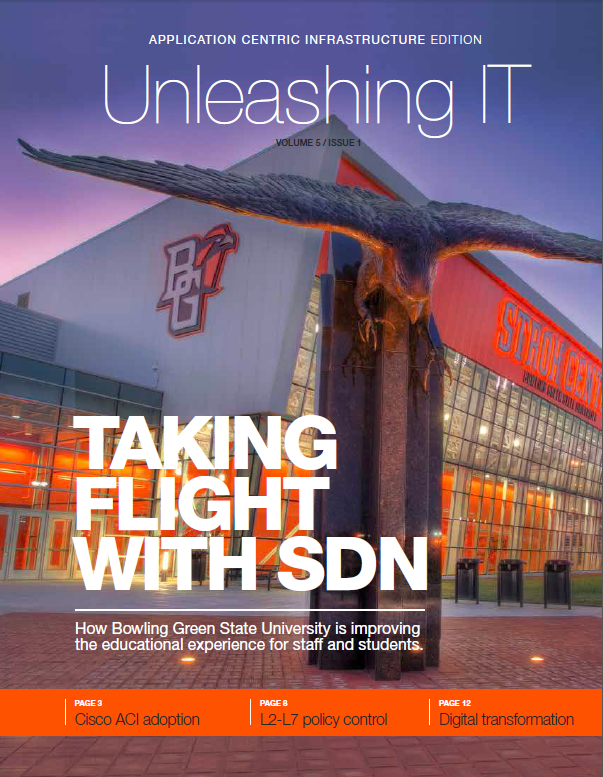There’s a new buzz phrase making the rounds recently around the concept of the “stack fallacy,” with the premise being that market leaders in any industry are well adept at going “down the stack” in terms of innovation but constantly struggle to stave off more nimble upstarts who are creating disruption in the layers above. The underlying factor, according to the source of this theory, is companies focusing too much on the tools they need to build and not enough on solving the evolving needs of their customers.
As the undisputed leader in networking infrastructure for decades, Cisco is now faced with this innovator’s dilemma with the emergence of SDN, or software-defined networking, which has spawned countless wannabes hoping to redefine how enterprise networks should be built. But as evidenced by the progress Cisco has made from vision to reality with the Cisco® Application Centric Infrastructure (Cisco ACI™), it is clear that Cisco is succeeding in every measure in overcoming the stack fallacy challenges.
Cisco introduced the ACI a little over a year ago. Since then more than 1000 customers have already deployed the groundbreaking SDN architecture as part of their application deployment and management processes. We believe the key success factor has been our ability to build the ACI ground-up on the fundamental understanding that that today’s enterprises must do a lot more with a lot less, and do it a lot faster.
Cisco incorporated this design principle into the original ACI architecture and has constantly evolved it with customer-driven features and capabilities such as:
- Docker container support, with integration between the Cisco Application Policy Infrastructure Controller (APIC) and Project Contiv, an open source project defining infrastructure policies for container-based applications.
- Enhanced security, with micro-segmentation support for VMware VDS, Microsoft Hyper-V virtual switch, and bare-metal applications, allowing granular endpoint security enforcement.
- Support for multiple data centers, with policy-driven automation, application mobility, and disaster recovery across multiple sites.
- Service insertion and chaining for any service device, without the need for a policy coordination device package.
In addition, technology leaders such as F5 Networks and Citrix are pushing the benefits of Cisco ACI up and down the stack to simplify network and security operations. And software innovators like Apprenda, CliQr, DataTorrent, and Vnomic are taking advantage of the policy-based architecture to boost the development, integration, and security of cloud and enterprise applications.
In the latest edition of Unleashing IT (“SDN Taking Flight”), we delve deeper in the specific customer use cases and benefits of the Cisco ACI. You can get a first-hand look at how Cisco is solving the stack fallacy by making enterprises more responsive and agile to the modern realities of IT.
Hi 3d,
This has nothing to do with stack fallacy. Don’t invent fancy terms. ACI has been successful because a lot of passionate people put sweat equity in it. Don’t take credit for things you have not been involved with. The technology will win on its own merit. Do something real for a change.
TJ
Hi Tim,
The point about “stack fallacy” or, to look at it another way, that ACI has full stack integration is correct. In the industry we also search for full stack engineers that are can understand the importance of policy driven automation up and down the full stack. To give you more insight into what DD is talking about and especially, what these new solutions involving application and cloud management that integrates with infrastructure automation take a look at my blog and check out the video with our ACI partners here: http://blogs.cisco.com/datacenter/aci-applications-spotlight-microsegmentation-and-new-application-partners
ACI’s open southbound APIs enable virtual and fabric device configuration and management across and application lifecycle. ACI’s open northbound APIs simplify operations and management of applications across their lifecycle. NB APIs also enable DevOps teams to enforce compliance and governance rules using the network in tight coupling with container and virtual machine management platforms. No fallacy here!
– Harry Petty
Harry Petty – your blog is irrelevant for this topic
whos the hottie in the banner?